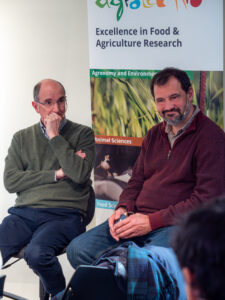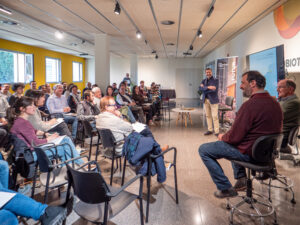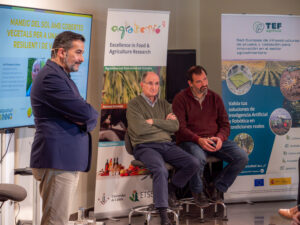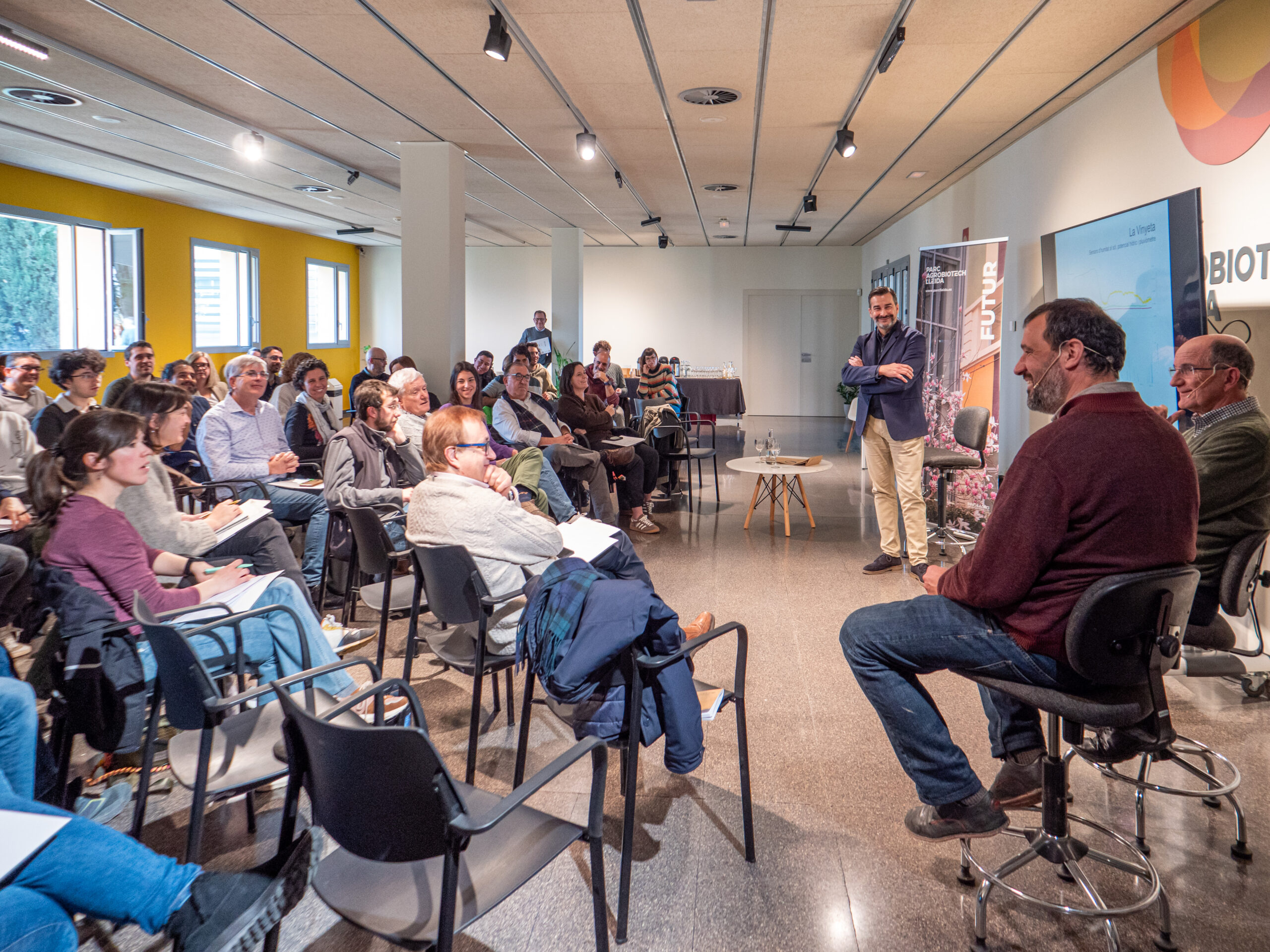- The first Breakfast4Inno of 2025 focuses on the use of this technique in the viticulture sector
- Agrotecnio and the University of Lleida are researching the management of cover crops in dry-farmed vineyards in collaboration with the L’Olivera cooperative in Vallbona de les Monges

The use of cover crops in viticulture is a sustainable agricultural practice that provides numerous benefits to vineyards, both from a soil and ecological perspective. It involves sowing or maintaining vegetation between vine rows, either by allowing natural vegetation to grow or by planting a specific species, depending on the viticulturist’s objectives.
Cover crops offer multiple advantages: they prevent soil erosion and loss, improve water availability for the crop, increase biodiversity and soil fertility, reduce weed pressure, facilitate machinery movement, and help regulate excessive vine vigor, among other benefits.
However, despite these advantages, many questions remain regarding cover crop management. For example: What species are the most suitable? How and when should the cover be terminated? And most importantly, what impact does the cover crop have on vineyard yield? The answers to these questions can vary greatly depending on the location, climate, soil type, and expected benefits of the cover crop. Therefore, research is needed to provide site-specific answers to these challenges.
Agrotecnio and the Weed Science and Plant Ecology group at the University of Lleida have been working for years to address some of these questions in different vineyard settings, both in dry-farmed and irrigated systems.
During the first Breakfast4Inno of 2025, the experience gained from working with dry-farmed vineyards in Vallbona de les Monges (Urgell) alongside the L’Olivera cooperative was shared.
As Jordi Recasens Guinjuan, Crop Protection researcher at Agrotecnio and coordinator of the Weed Science and Plant Ecology group at the University of Lleida, emphasized, “we must continue studying the effects of cover crops on vine vigor and yield. Our research findings confirm that despite the challenging climate conditions in recent years, managing cover crops has not been an additional handicap for the vineyard. On the contrary, we have observed an improvement in soil water infiltration capacity, and in some seasons, even greater vine vigor and yield.”
Recasens noted that in dry-farmed vineyards, the recommended approach is to establish cover crops in alternating rows, reducing competition with the vines while maintaining the soil benefits.
One of the key aspects of this technique is determining the right time to terminate the cover crop, based on its biomass and the water status of both the soil and the vines.
Pau Moragas Bouyat, agricultural engineer, oenologist, and production manager at L’Olivera Cooperativa in Vallbona de les Monges, explained that the use of cover crops in their vineyards “responds to the desire to make viticulture viable in the area“. Moragas noted that cultivation acts as a natural barrier to the spread of wildfires and emphasized the importance of adding value to the final product. In their case, the wines combine gastronomic quality, health benefits, artisanal work, biodiversity, respect and appreciation for the landscape, organic farming, and social inclusion.
Agrotecnio and L’Olivera cooperative are working within an operational group granted by the Department of Agriculture to further study this technique. Both speakers agreed on the need for further research on cover crop management in dry-farmed viticulture to find a balance between the benefits they provide to the ecosystem and their potential competition with the crop. In this regard, selecting the appropriate cover crop species and management strategy is essential.



